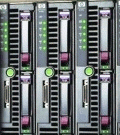Popular Network Management Software in Comparison
Manually monitoring several servers, routers and printers can be quite time consuming, so it is only logical to automate this task by implementing a network management system.  Unfortunately there is an almost endless number of products to choose from, so we try to compare some of the most popular or promising solutions around and give short reviews of their features and capabilities. We have included only products that are targeted specifically at the management of IP networks with an emphasis on network monitoring and network alerting, thereby leaving out Desktop and Deployment solutions (Novell Zenworks, Microsoft SMS), Performance Measurement Products (NetQuos, Solarwinds Orion) or solutions that monitor web services only. Unfortunately there is an almost endless number of products to choose from, so we try to compare some of the most popular or promising solutions around and give short reviews of their features and capabilities. We have included only products that are targeted specifically at the management of IP networks with an emphasis on network monitoring and network alerting, thereby leaving out Desktop and Deployment solutions (Novell Zenworks, Microsoft SMS), Performance Measurement Products (NetQuos, Solarwinds Orion) or solutions that monitor web services only.
Open Source project that wraps Nagios, NMAP on PHP and Apache with a new web frontend that does not live up to its agressive marketing claims in terms of usability. Functionally enhanced small business and professional versions are available at annual subscription fees of 8,000,- and 16,000,- US$ respectively.
Pros: broad range of agents and additions due to Nagios core, active development and commercial support available.
Cons: Judging from the support forum comments, installation of the numerous components can be a nightmare unless bootable ISO / VMware appliance images are used.
Powerful network management system written in Java. It is based on a JBOSS application server and uses Java agents for discovery. The community version of Hyperic is free.
Pros: Powerful, high-level monitoring functions.
Cons: -.
nightmare unless bootable ISO / VMware appliance images are used.
Powerful open source network management and alerting system written in PHP with a beautiful and fast web GUI. Originally starting as a Nagios fork, it is now completely rewritten from ground up while still keeping full Nagios check compatibility. It may be easily integrated with PNP, Puppet, Ansible, Chef, Vagrant, Elastic, PNP, Graylog and Graphite. With a scalable satellite topology it is suited both for small and large monitoring environments.
Pros: Powerful config language, active community, scalable
Cons: No auto-discovery, graphing not fully integrated
Currently the most widely implemented Open Source Network Management Solution. Based on Linux, Nagios exceeds the usual IP and SNMP testing by offering an extensive set of collector plugins, that allows to gather performance and availability data from a broad range of operating systems including Windows and Netware. While installation is straightforward and complies to proven Linux standards, its web based user interface is carelessly designed, old-fashioned and not very well organized. However, even the simplest management tasks, such as adding new network devices must be done by manually editing configuration files at the linux operating system level. A linux specialist may craft an incredibly powerful network management system with Nagios, but real world IT departments will most likely expect a much more user friendly and collaborative management interface.
Pros: Free Open Source Solution, very powerful agents
Cons: Ugly Web GUI, steep learning curve, devices and tests need to be managed via config files.
This is an interesting new Open Source project with the core server running on Windows or Linux and the broadest database selection that we have seen so far in any NMS server, including MS SQL, IngreSQL, MySQL, Oracle and SQLite embedded. It uses SNMP as well as its own Windows or Linux agent and is designed to discover network nodes automatically. While installation is much easier than with most comparable systems, the implementation of a dedicated client software is a bit odd. Adding devices and changing configuration can only be done via the client software, a separate web interface for standard web browsers or mobile devices can only monitor and acknowledge events and uses different views than on the management client. If NetXMS would have a unified web interface instead, it could become a killer application.
Pros: Multi Platform, dedicated agents, broad Database support, Auto Discovery, Magic Packet Wakeup.
Cons: Needs dedicated client software for configuration, not yet widely deployed
This is the oldest Open Source Network Management project around. This Linux package is built around Java, Tomcat, PostgreSQL and RRD Tool and was designed explicitly to manage large enterprise networks and to compete against HP OpenView and Tivoli. Bulk addition of IP hosts is very easy and the software will instantly monitor basic services and even show ICMP response time graphs. Many advanced features seem to be added in a crude way, however. The Web GUI itself is not entirely bad but would urgently need a complete structural redesign. With the capability of managing thousands of devices one would expect some sort of view categorized by location or groups, but not a linear list view scrolling down endlessly. As with many Java applications the software is somewhat flaky and dependent on specific Tomcat versions. Unless you are firmly familiar with Java programming, debugging and fixing error messages is not trivial.
Pros: Free Open Source Solution, usable for a large number of IP hosts, basic monitoring is very easy, offers ICMP response time monitoring.
Cons: Web GUI would need complete overhaul, linear device list, only IP based monitoring (no shared websites for example.) Java code is difficult to debug and flaky.
op5 Monitor is able to see through all layers, including applications, services and traffic across all platforms such as Intel, AS400, AIX, HP_UX, vmware, KVM, XEN and operating systems such as Linux, Novell, Solaris and Windows. Commercial product with free 20 device entry level license.
Powerful commercial network management system that can be very quickly installed on Windows and is managed via web frontend. It comes with an embedded MySQL engine but can also be used with a dedicated MySQL database. The server software runs as a windows service and is written mostly in Java. Usability of the web GUI is good. During our evaluation auto-discovery did not work and classifying network devices was found to be a bit clumsy. There is no feedback at all during SNMP discovery, which is annoying, since it is not obvious which of the numerous SNMP community strings is actually used. We liked the ability to manually re-discover a single device, and the software comes with a large repository of MIBs that include many firewall models of different manufacturers. Graphing is good and includes latency times for each device. The software includes a large number of predefined reports and there are numerous add-on products available. Free single user license fpr 20 devices, up to 10,000,- US$ for unlimited version, plus numerous add-on prices.
Pros: Easy setup, broad feature base, immediately usable GUI, good graphing.
Cons: Price.

Cloud based commercial network management system, that is, you don’t need any local server hardware for monitoring. Data collection works through local agents called Network Sequencers. PathView is able to monitor SLA conformance and VoIP readiness. A small number of hosts can be monitored for free.
Pros: No local hardware necessary, very easy to set up
Cons: Somewhat pricey
Commercial Windows based commercial network management system that offers web and windows gui. It is installed in minutes and does not depend on external web- or SQL-servers. It has an agent-less design that lets you use numerous sensors to collect system data. Devices are shown in a tree-like fashion. Visual display and graphing is excellent.
Pros: Very easy setup, broad range of sensors, self-contained design.
Cons: -
Very simple but straightforward availibility monitor for IP hosts and services. Runs as a Windows service and has an easy to use graphical web browser interface that allows to group devices by customer or location. No SNMP support Unfortunately, development seems to have stopped years ago.
One of the oldest Windows server monitoring tools around. If you are looking for a quick way to automatically check ping, TCP, windows services, web server response and free disk space on just a few hosts, then this is the right tool for you. Setup could not be easier and the user interface is self explanatory, so you can set up a basic monitoring system in a matter of minutes. However, there is no database, no data graphing, no SNMP device discovery and neither web GUI nor a client server model. License price is 199,- / 299,- US$.
Pros: Unbeatable simplicity and ease of use for simple ping and service monitoring, ideal for checking availability of just a few devices.
Cons: No data graphing, no reporting, no SNMP, can only be used by one person at a time, development seems to have stalled.
Commercial, Windows based Network Management solution. This is the right choice for people looking for a proven, powerful, yet easy to use based management software, but don´t want to bother with the complexity of NetView or Tivoly and don´t want to build a linux based system. Allows reports and trend graphs and autodiscovery, License prices range from 1.000,- to 7.000,-. US$
Free, Ad financed Network Management solution for up to 250 servers that runs on windows and can be set up within minutes. It features a configurable portal page, agent-less discovery via SNMP, SSH and WMI with alerting and reporting. Even though it lacks trending and advanced diagnostic features, it´s excellent Ajax based web frontend clearly sets it apart from the rest of the pack. We found the difference viewer between any two devices to be very useful. Out of the box this solution includes the ability to edit comments, serial numbers, trouble tickets, patch history and virus definition check.
Pros: Excellent user interface, easy to install, small foot print.
Cons: No data graphing and performance monitoring (yet?), integrated community and ad functions may raise some security concerns, unnerving ad bar.
Commercial, Windows based Network Management solution with a long development history from a simple IP ping tester to a full fledged WMI and SNMP based network management solution with IPv6 support, SQL and Exchange monitoring, drag and drop MIB import and much more. Our demo software refused to install on a up to date Windows 2003 R2 server, however. License prices range from 2.000,- to 7.000,-. US$
Newcomer in the Management arena based on Linux, PHP and MySQL. Has a quite usable and well organized web interface that makes it worth considering. Installation needs some Linux and PHP expertise, since documentation is lacking, but once this is done, you have a well designed management system for small to medium size networks Flexible Alerting based on Users / Groups. Trigger Expressions are very elegant from a mathematical standpoint, but hard to grasp for administrators expecting preconfigured defaults.
Pros: Open Source, well designed Web GUI and overall concept, good alerting, dedicated agents. active community.
Cons: Suitability for large networks with 1000+ nodes questionable due to PHP performance and Web GUI limitations, No realtime tests, complicated templates and alerting rules.
Probably the most innovative and elegant Open Source solution available. Has still some rough edges, but it really shines in elegance and usability and even promises to support medium to large IT environments. Unless you must use a windows based solution, you should definitely evaluate this one.
Pros: Open Source, very interesting and powerful concept, very good user interface, agent-less monitoring via SNMP, SSH, WMI
Cons: Debugging and modifications that go beyond what can be done via web interface is not trivial and requires python, zope and TALES skills.
Zyrion Traverse is a powerful but expensive Cloud Monitoring, Network Performance Monitoring, Server Monitoring and Systems Monitoring software solution, with integrated Business Service Management (BSM) functionality.

|
